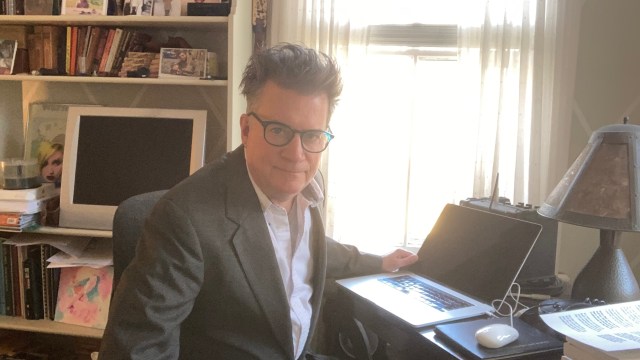In English grammar, a preposition is a word that typically comes before a noun or pronoun and expresses a relationship between that noun/pronoun and another word in the sentence. Prepositions indicate location, time, direction, manner, or other relationships. Here are some examples of prepositions:
In: She lives in New York.
On: The book is on the table.
Under: The cat is under the bed.
At: We will meet at the park.
By: I traveled by train.
For: This gift is for you.
With: He went with his friends.
To: She went to the store.
From: I received a letter from him.
Between: The sandwich is between two slices of bread.
You can see that a preposition is like a bridge word. By itself, it has little substance. Its existence is justified by the noun with which it appears, as well as the accompanying verb:
“She lives in New York.” The preposition “in” merely connects and clarifies the two substantive ideas, “She lives” and “New York.”
Until recently, grammarians insisted that a sentence should never end with a preposition. Among academics, the rule against prepositions was said to originate with Latin, the “father” of the five Romance Languages: French; Italian; Portuguese; Romanian; and Spanish. In Latin, a structurally sound sentence can’t be made with a preposition placed at the end.
But that rule is fading. Today’s linguists say that because English is not a Romance language, we need not use them as a guide.
In 2024, no less an authority than Merriam-Webster announced on Instagram, “It is permissible in English for a preposition to be what you end a sentence with.” To underscore its edict, as you can see, it used the preposition “with” at the end of the sentence.
The Problem? Prepositions Are Weak Words
In my opinion, strong sentences begin and end with strong words—either nouns or verbs. This goes back to the days when humans communicated primarily by speaking to each other, and the most effective way to get your point across was to make your last word the strongest word. The last word of your sentence is like the punchline of a joke: the words preceding it are the “set up,” and the full power of your message is not released until the end.
Consider the sentence used by Merriam-Webster in its Instagram post: “It is permissible in English for a preposition to be what you end a sentence with.”
Could you ever imagine a sentence more wimpy, convoluted, and weak? Instead, try this variation:
“When you end a sentence in English, it’s permissible to use…. [drum roll please…. let the suspense build]…. a preposition!”
In our revised example, we end the sentence by revealing a solid noun (“preposition”) that has real weight. We do not end the sentence with a wimpy preposition.
Here’s another example. Advocates of ending sentences with prepositions will point to this old-fashioned sentence as being foolishly correct: “This is the type of arrant pedantry up with which I will not put.” According to them, this sentence should read, “This is the type of arrant pedantry I will not put up with.” It sounds more natural, they say, to use the preposition “with” at the end.
I say that both are lousy examples of sentence construction.
Here’s how I would write it: “I will not put up with this type of errant pedantry.”
We end on a solid noun, “pedantry.” Simple, direct, and to the point.
If you insist on starting the sentence in the original way, then I’d write it like this:
“This is the type of arrant pedantry I condemn.” I’ve replaced the weak phrasal verb “will not put up with” with a much more concise verb, “condemn.”
One more example. Advocates of prepositional endings offer this sentence:
“English grammar isn’t something with which to mess.”
That’s awkward. (True.) They say this version is acceptable: “English grammar isn’t something to mess with.”
I say both are weak. I would write:
“Don’t mess with English grammar.”
A simple command, simply stated.
Is It Ever Better to End with a Preposition?
Here’s a good question: Are there occasions where a preposition is strong enough to use at the end of a sentence?
Yes, such as in cases where you’re using a phrasal verb, which is a commonly used verb consisting of multiple words. Some examples are “log in,” “zone out,” and “look up.” For example, you might say, “I went to my account, and to my horror I discovered I couldn’t log in.” In this case, the preposition “in” cannot be separated from “log.” They function as one word.
My takeaway from this discussion is this: Always look for the strongest and clearest words to begin and end your sentences. Finish not with a whimper but a bang!










